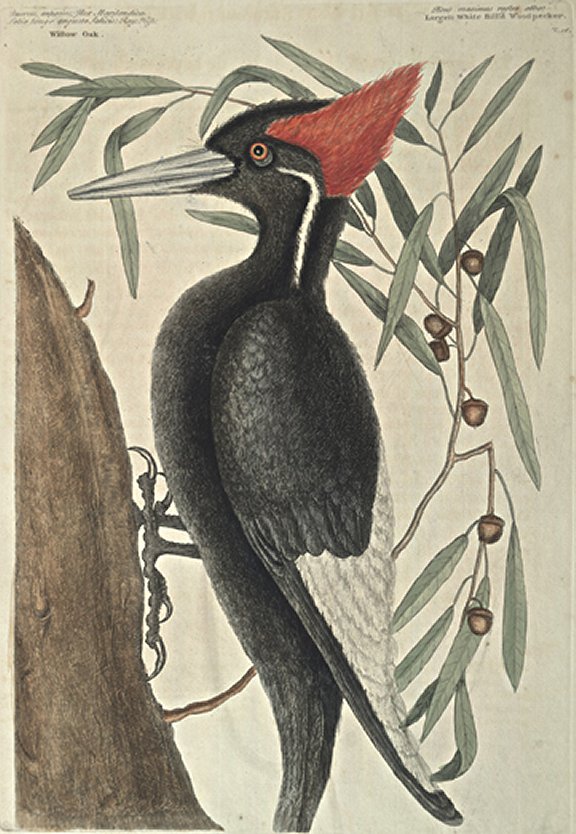Plate Number: I 16Picus Maximus rostro albo: The Largest White-bill Wood-pecker Weighs twenty ounces; about the size, or somewhat larger than a Crow. The Bill white as Ivory, three inches long, and channelled from the basis to the point: the Iris of the eye yellow: the hind-part of the Head adorned with a large peaked crest of scarlet feathers: a crooked white Stripe runs from the eye on each side the Neck, towards the Wing: the lower part of the Back and Wings (except the large Quill-feathers) are white, all the rest of the Bird is black. The Bills of these Birds are much valued by the Canada Indians, who make Coronets of 'em for their Princes and great warriers, by fixing them round a Wreath, with their points outward. The Northern Indians having none of these Birds in their cold country, purchase them of the Southern People at the price of two, and sometimes three Buck-shins a Bill. These Birds subsist chiefly on Ants, Wood-worms, and other Insects, which they hew out of rotten trees; nature having so formed their Bills, that in an hour or two's time they will raise a bushel of chips; for which the Spaniards call 'em Carpenteros. Quercus, an potius Ilex Marilandica folio longo angusto Salicus. Raii Hist: The Willow-OakThis Oak is never found but in low moist land; the Leaves are long, narrow and smooth-edged, in shape like the Willow: the wood is soft and course-grained, and of less use than most of the other kinds of Oak. In mild Winters they retain their Leaves in Carolina; but in Virginia they drop. |